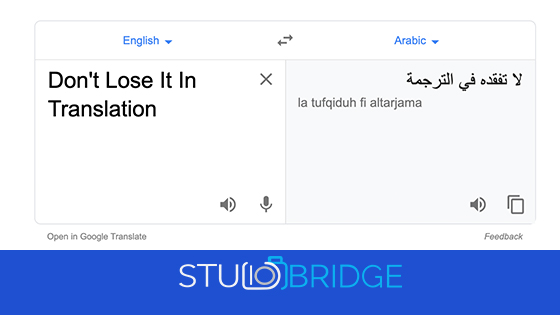When you’re looking to build out the translation arm of your workflow, there are typically 3 options when it comes to implementation. Below I break down those 3 options and the pros and cons of our experience. Please note that my opinions below are based on workflows wherein English (Germanic language) is the core and the translation is being made in Arabic (a Semitic language).
Option 1: Hire translators to manually translate product by product.
Pros: Ensures a high-quality translation, as each translation is given more attention and context.
Cons: It’s expensive, doesn’t scale well, still leaves room for inconsistencies within the work.
Opinion: This option is the slowest and most expensive way to translate content. With this method however you will get a high level of quality. I believe this method in translation is best suited for small volumes, and for content that is critical for accuracy. For example, you will want your legal agreements such as T&Cs to be translated by an individual and not left up to a machine or memory to ensure accuracy and context. Other areas such as medical category products should also be treated with the utmost care, so a human translator is best suited.
Option 2: Machine translation
Pros: Low cost, fast, can scale
Cons: Poor quality, requires a lot of quality assurance/editing, inconsistent in terms of context
Opinion: This method is often the preferred choice of people not involved in the translation department but rather whoever is looking after the budget. It’s easy to see the drastic lower cost for machine translation, however, it’s important to keep in mind that while you’re saving money on the cost in translation, you’re most likely costing your business much more money in lost revenue due to poor translations being inaccurate and losing the trust of your potential customers.
Here’s an example that helped me understand just how inaccurate machine translation could be. This example is using Google Translate English to Arabic:
I had the English on the left as an example bullet point of a product detail for a pair of women’s shoes. I had a copy and pasted that into Google Translate and sent only the Arabic to a localization manager and asked her to translate that to English for me. This is what that Arabic localization manager came back with:
My goal here is not to completely bash Google translate or all machine translations. My point here is to highlight the importance of context when it comes to doing a word for word translation. It was this very example a few years ago that helped me understand this concept.
Option 3: Translation Memory tool
Pros: Ensures the consistent quality within context, fast, scales well since as the memory grows there are more and more matches
Cons: Expensive in the initial phase of building the memory
Opinion: This is what I’ve found to be the best blend of leveraging technology to scale high-quality human translation. There are several options for workflow tools in the market, but at a high level, a translation memory allows you to put in your source language, translate that content and it stores that translation so that it can recognize if the same or similar content is ever entered into the system in the future. This drastically reduces the number of new translations needed as time goes on. This also means that over time, you’ve built up a memory that’s specific to your business and context of your products.
You can even get granular to create different memories around different contexts. For example, maybe the translations for addressing males in the men’s category products are different than that of female products, or children’s products? It’s all in the tone and context.
Why is this a topic we’re covering in the Studio Bridge blog? It’s because we want to be a source of knowledge around all aspects of the process, not just the technical workflow aspect. We’re about helping to make your overall process more efficient.
With Studio Bridge you’re not only getting workflow software designed specifically for this process but also, you’re working with a team that lives and breathes this niche process within e-commerce. Not to mention we’ve got experience with helping teams format core language product information that easily integrates into translation memories and other workflow tools making the entire end to end process seamless.
Be sure to check out the Studio Bridge blog for more info and opinions around e-commerce product content creation. www.StudioBridge.io




